Are there specific types of frogs and toads that are beneficial for pest control?
Exploring nature’s eco-friendly pest management solutions
Frogs and toads can be great allies in pest control. These amphibians eat many insects that can damage gardens and crops.
While all frogs and toads help with pest control, some types are better at it than others.
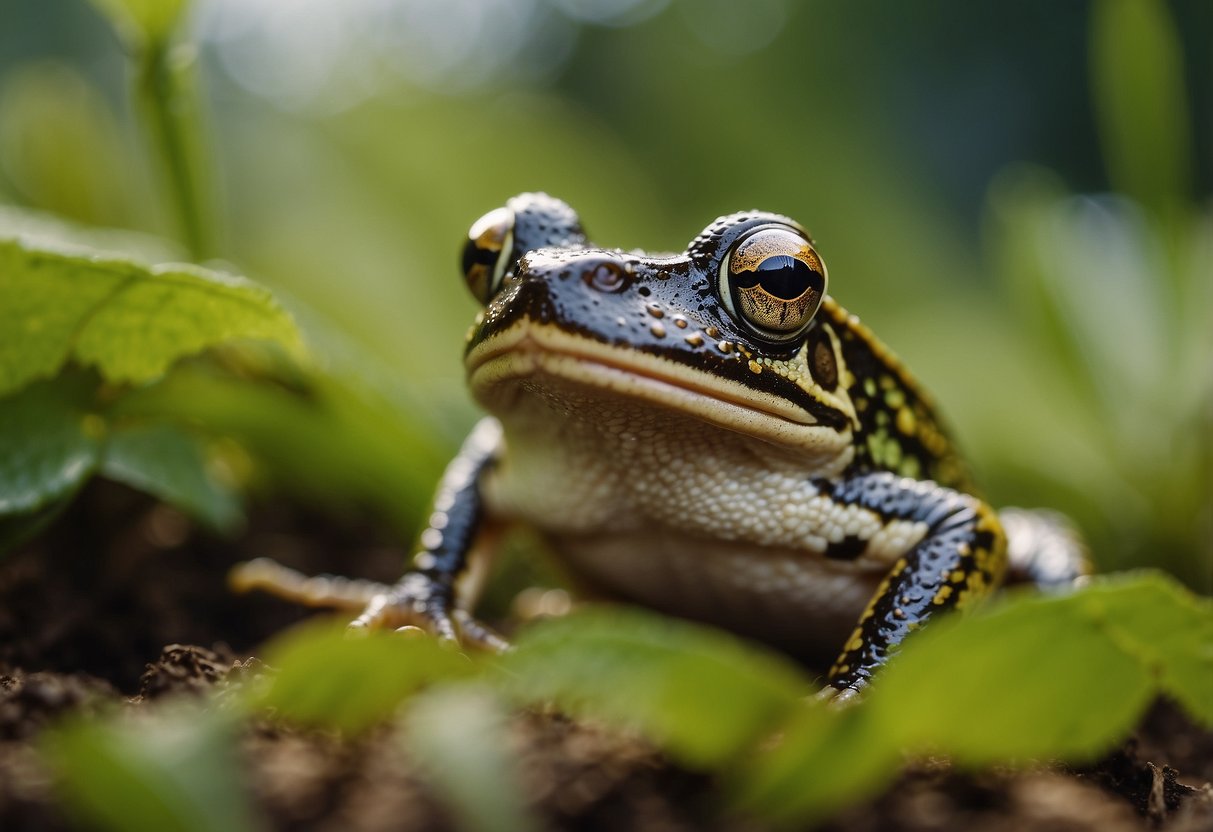
American toads and green frogs are especially good for pest control in gardens. These species eat lots of insects and are common in many areas.
American toads can eat up to 1,000 insects per day, including mosquitoes, flies, and beetles.
Green frogs also eat many pests that harm plants.
I’ve found that having frogs and toads in my garden really helps keep bugs under control. They’re a natural way to protect plants without using chemicals. Plus, it’s fun to watch and listen to them!
Key Takeaways
- American toads and green frogs are very effective for garden pest control
- Frogs and toads can eat hundreds of insects daily, reducing the need for pesticides
- Creating a frog-friendly habitat in your garden can attract these helpful amphibians
The Role of Amphibians in Pest Control
Frogs and toads play a crucial role in keeping pest populations under control in gardens and ecosystems. I’ve found that these amphibians are natural predators that consume large amounts of insects and other small animals.
Frogs eat caterpillars and many other garden pests. This helps protect crops and plants from damage.
In my experience, having frogs around can reduce the need for chemical pesticides.
Amphibians are especially active at night when many pests come out. I’ve observed that a single frog can eat dozens of insects in one evening. This makes them very efficient at pest control.
Some common amphibians that help with pest control include:
- American toads
- Tree frogs
- Leopard frogs
- Bullfrogs
I’ve noticed that American toads are particularly helpful in gardens across central and eastern North America. Their diet consists of many common garden pests.
By attracting frogs and toads to your yard, you can harness their natural pest control abilities. I recommend creating a frog-friendly environment with water sources and hiding spots to encourage these helpful amphibians.
Identifying Beneficial Frog Species

Some frog species are great for pest control in gardens and yards. They eat insects and other small pests that can damage plants.
American Toad
American toads are bug-eating machines. They can eat up to 1,000 insects per day! These large frogs have warty skin and come in shades of brown, gray, or olive.
I’ve seen American toads hang out in gardens, forests, and fields. They love damp areas with lots of bugs. At night, they hunt for crickets, beetles, and flies.
To ID an American toad, I look for:
- Big, bumpy glands behind the eyes
- Short, stout body
- Dry, warty skin
These toads are great for gardens. They eat slugs and snails that munch on plants. I’ve found they’re easy to attract with a shallow water dish and some shady spots.
Common Frog
Common frogs are another helpful species for pest control. They’re found in many parts of Europe and Asia.
These frogs have smooth, moist skin and long legs for jumping. I’ve noticed common frogs come in various colors:
- Brown
- Olive green
- Yellowish
- Grayish
These frogs eat flies, mosquitoes, and other small insects. They’re active both day and night, making them good 24/7 pest controllers.
Common frogs prefer damp areas near ponds or streams. I’ve seen them in gardens with water features. They help keep mosquito numbers down, which is great for outdoor spaces.
Spring Peeper
Spring peepers are tiny frogs with a big appetite for insects. They’re only about an inch long, but don’t let their size fool you. These little guys can eat a lot of bugs!
I can spot spring peepers by their:
- Small size
- X-shaped mark on their back
- Big toe pads for climbing
These frogs are most active at night. They love to eat mosquitoes, flies, and small spiders. I’ve heard their loud peeping calls on spring evenings.
Spring peepers do well in areas with shrubs and low plants. They climb up vegetation to hunt for insects. Having these frogs around can help keep flying pest numbers down.
Identifying Beneficial Toad Species

Certain toad species can be great allies in pest control. They eat many insects and other small creatures that damage plants.
Cane Toad
Cane toads are large and can eat many pests. They gobble up insects, rodents, and even snakes. These toads were brought to some places to control sugar cane beetles.
I’ve seen cane toads eat a lot in one sitting. They have big appetites and will eat almost any small animal they can fit in their mouths.
But I must warn you – cane toads can be harmful too. They’re poisonous and can hurt pets or wildlife. So it’s best to admire them from afar.
European Green Toad
European green toads are smaller than cane toads. But don’t let their size fool you – they’re still great at pest control.
I’ve noticed these toads love to eat flies, beetles, and other bugs that bother gardens. They’re active hunters and will hop around looking for food.
Green toads blend in well with plants. This makes them good garden helpers. They can hide from predators while waiting to catch pests.
Spadefoot Toad
Spadefoot toads are special. They spend most of their time underground. But when they come out, they’re hungry!
I’ve watched spadefoot toads eat many insects in a short time. They especially like to munch on ants, beetles, and caterpillars.
These toads are great for gardens. They eat pests without damaging plants. Plus, their burrowing can help aerate soil.
Spadefoot toads are shy. You might not see them often. But rest assured, they’re working hard to keep pests under control.
Habitats and Behaviors
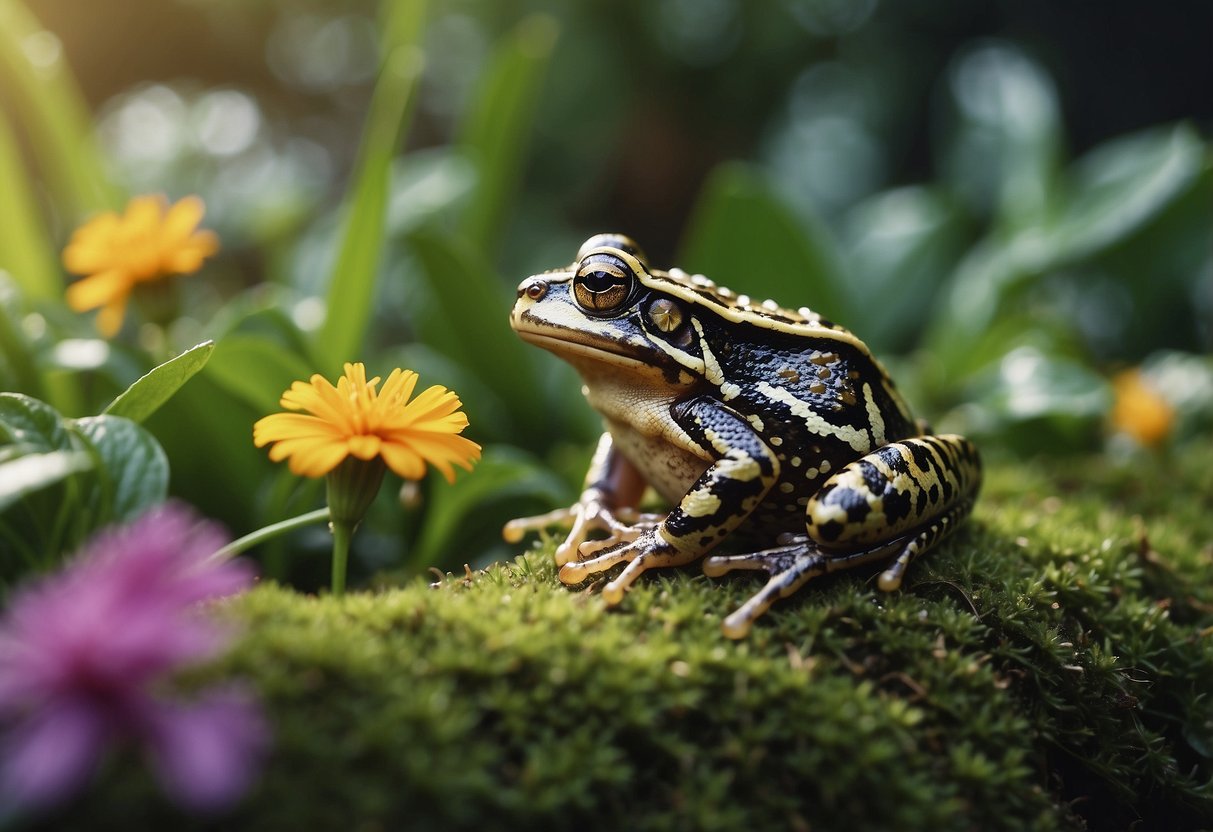
Frogs and toads live in different environments and have unique behaviors that make them useful for pest control. These amphibians adapt to various habitats and use different methods to catch insects.
Wetlands and Water Bodies
I’ve found that many frogs thrive in wetlands and near water bodies.
Ponds, lakes, and streams are prime spots for frogs. They use these areas to lay eggs and find food.
Frogs often sit at the water’s edge, waiting to catch insects. Their long legs help them jump quickly to grab flying bugs. Some frogs even swim to catch water insects.
At night, I’ve noticed frogs become more active. They make distinct calls to attract mates and mark their territory. This nighttime activity helps control nocturnal pests.
Garden and Agricultural Land
I’ve observed that toads prefer drier environments like gardens and farms.
They hide under leaves or in small burrows during the day.
At night, toads come out to hunt. They eat slugs, beetles, and other pests that damage crops.
Toads use their sticky tongues to catch insects quickly.
Farmers and gardeners can attract toads by creating hiding spots. Simple things like small piles of rocks or pieces of wood work well. I’ve seen toads return to the same garden year after year if they find good shelter.
The Impact of Season and Climate
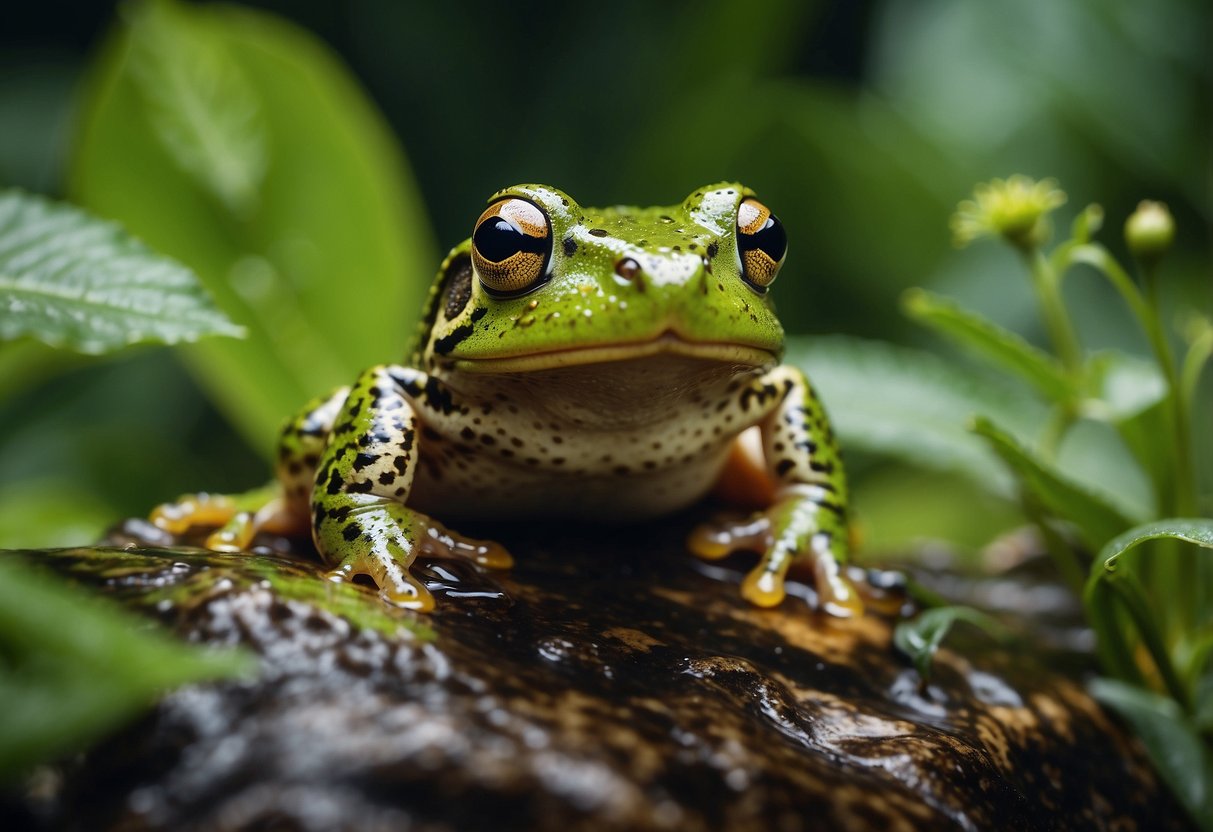
Season and climate play crucial roles in frog and toad activity for pest control. These factors affect breeding patterns and habitat conditions, which in turn influence their effectiveness as natural pest controllers.
Breeding Season Influence
Frog and toad breeding seasons vary by species and region. During this time, their populations increase, leading to more pest control.
In spring and summer, many species become more active.
I’ve observed that warmer temperatures boost frog and toad metabolism. This makes them eat more insects and pests.
Some species, like tree frogs, are more vocal during breeding seasons. Their calls can help gardeners identify when pest control activity is high.
Water availability is key for breeding. Ponds, puddles, and damp areas attract more frogs and toads. This concentrates their pest control efforts in these zones.
Climate Change Effects
Climate change is altering frog and toad habitats and behaviors. This affects their role in pest control.
I’ve found that rising temperatures are speeding up frog and toad aging. This could lead to shorter lifespans and less time for pest control.
Changing rainfall patterns impact breeding cycles. Droughts can reduce frog and toad populations, limiting their pest control abilities.
Some frog species are moving to new areas due to climate change. This shifts where they provide pest control services.
Extreme weather events can harm frog and toad populations. Floods or heat waves may reduce their numbers, affecting pest control in an area.
Conservation and Protection
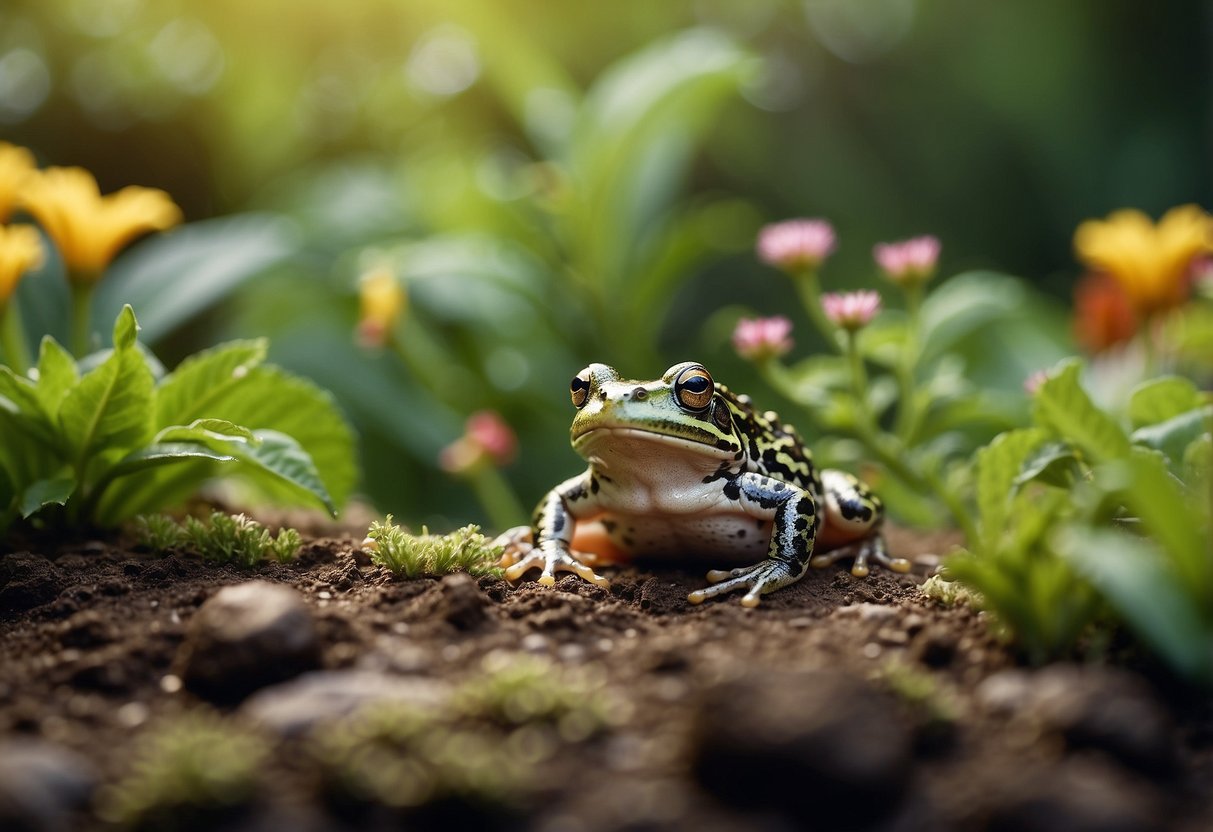
Protecting frogs and toads is crucial for maintaining healthy ecosystems and controlling pests naturally. I’ll explore the main threats these amphibians face and highlight key strategies to conserve their populations.
Threats to Amphibian Populations
Frogs and toads face numerous dangers in today’s world. Habitat loss is a major issue, as wetlands and forests are destroyed for development. This limits their breeding grounds and living spaces.
Pollution is another serious threat. Chemicals from farms and lawns can harm frogs’ sensitive skin. Climate change also impacts their habitats, altering temperatures and rainfall patterns.
Diseases like chytrid fungus have caused declines in many frog species. This fungus infects their skin and can be deadly.
Invasive species can outcompete native frogs for food and habitat. Some introduced predators may even eat local frog populations.
Conservation Strategies
I believe there are several effective ways to protect frogs and toads. Creating frog-friendly yards is a great start. This can include building small ponds and avoiding chemical pesticides.
Supporting wetland restoration projects helps recreate lost habitats. Joining local conservation groups can amplify these efforts.
Reducing personal chemical use is key. I recommend using natural pest control methods instead of harmful pesticides.
Educating others about frog conservation is vital. Sharing information on social media or in schools raises awareness.
Participating in citizen science projects, like frog call surveys, aids researchers in tracking populations. This data helps guide conservation efforts.
Integrating Frogs and Toads into Pest Management Strategies
I find that adding frogs and toads to a garden is an effective way to control pests naturally. These amphibians eat many harmful insects that damage plants.
To attract frogs and toads, I suggest creating a suitable habitat. This includes adding a small pond or water feature to the garden. Even a simple terra-cotta saucer filled with water can work.
I also recommend providing shady, moist areas where frogs and toads can hide. Placing logs, rocks, or dense plantings around the garden gives them shelter.
Reducing or eliminating pesticide use is crucial. Chemicals can harm frogs and toads, defeating the purpose of natural pest control.
Some beneficial species for pest management include:
- American Toad
- Spring Peeper
- Green Frog
- Gray Tree Frog
These amphibians can eat thousands of insects in a single growing season. They target pests like slugs, snails, and various harmful insects.
I’ve found that integrating frogs and toads into pest management takes time. It’s important to be patient as they establish themselves in the garden ecosystem.
By creating a frog-friendly environment, I can reduce my reliance on chemical pesticides and promote a more balanced garden ecosystem.
Legal and Ethical Considerations of Using Amphibians
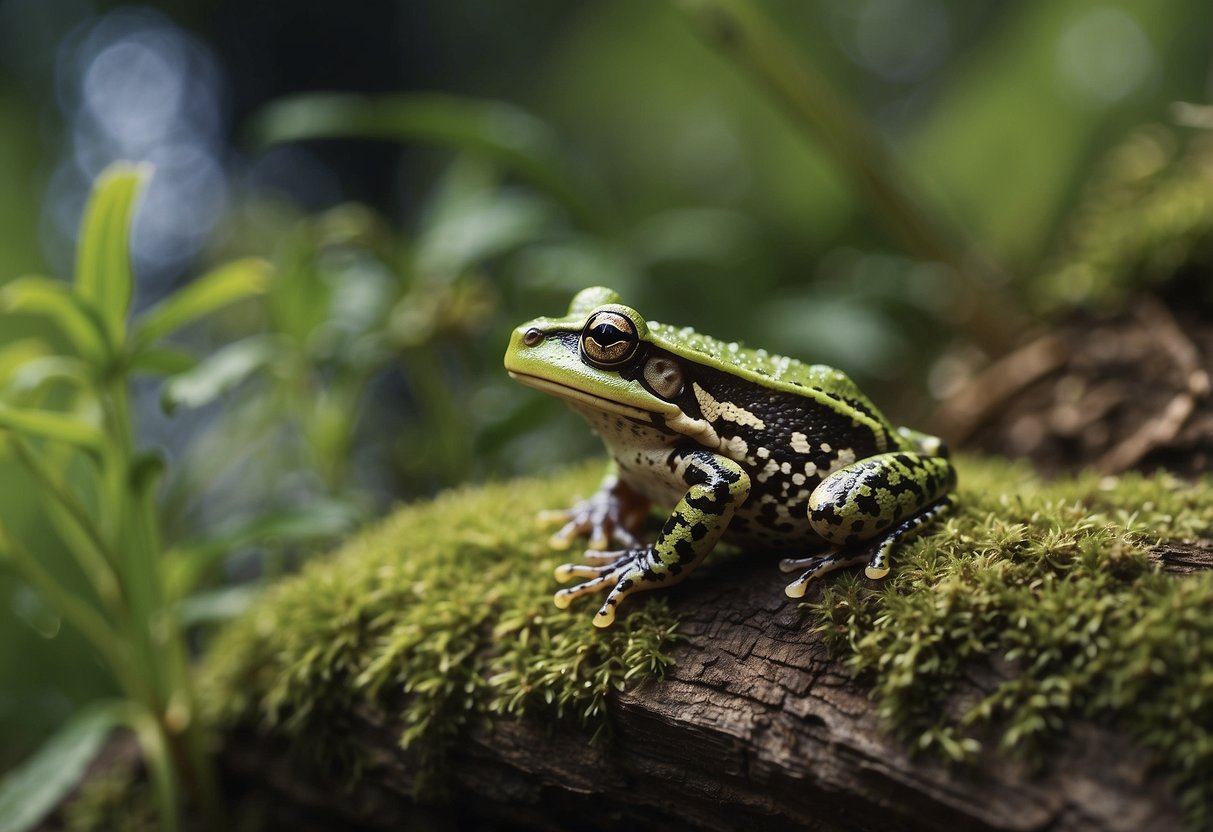
When using amphibians for pest control, I must consider important legal and ethical issues. Many countries have laws protecting native amphibian species from capture and relocation.
I need to check local regulations before introducing any frogs or toads to a new area. Some places require permits or have restrictions on moving amphibians.
Ethical concerns also arise when using animals for human benefit. Toe clipping of amphibians, a common marking method, has been debated. While some argue it’s harmless, others view it as unethical.
I should always prioritize the welfare of the amphibians. This means providing suitable habitat and not overcrowding. Proper care is crucial for their health and effectiveness as pest controllers.
It’s important to consider the impact on local ecosystems. Introducing non-native species can harm native wildlife. I must be cautious and research potential consequences thoroughly.
When possible, I recommend using native species already present in the area. This avoids many legal and ethical issues while still benefiting from amphibians’ pest control abilities.
Frequently Asked Questions
Frogs and toads play important roles in pest control. They eat many insects that can damage plants and crops. Let’s look at some common questions about how these amphibians help manage pests.
What advantages do frogs offer in controlling garden pests?
Frogs are great at catching flying insects. They can leap long distances to snatch mosquitoes, flies, and moths out of the air. Their sticky tongues help them grab prey quickly.
Frogs also eat slugs and snails that chew on plants. This protects vegetables and flowers from damage.
How do toads contribute to the ecosystem through pest management?
Toads eat lots of crawling insects. They hunt beetles, ants, and grubs that live in soil and leaf litter.
One toad can eat up to 100 insects in a single night. This keeps pest populations down naturally.
Can introducing frogs and toads into my garden help reduce insect populations?
Yes, having frogs and toads around can lower insect numbers. But I don’t suggest bringing them in from elsewhere.
Instead, I recommend making your yard frog-friendly. Add water features and create sheltered spots. Local frogs and toads will move in on their own.
What specific pest issues can be addressed by encouraging a frog presence?
Frogs can help with mosquito control. They eat the adults and larvae, reducing bites and disease spread.
They also manage cutworms, which damage young plants. Frogs eat these pests before they can cause harm.
In what ways do toads act as a natural deterrent to garden pests?
Toads scare away some pests just by being there. Their presence makes insects more cautious about coming into the area.
Toads also produce calls that can drive away certain insects. This adds another layer of pest control.
What kind of pest control benefits can I expect from having frogs on my property?
With frogs around, I’d expect fewer mosquitoes and flies buzzing about.
You might see less damage to plants from caterpillars and beetles.
Frogs can help keep slugs and snails in check too. This means healthier plants and less need for pesticides.
